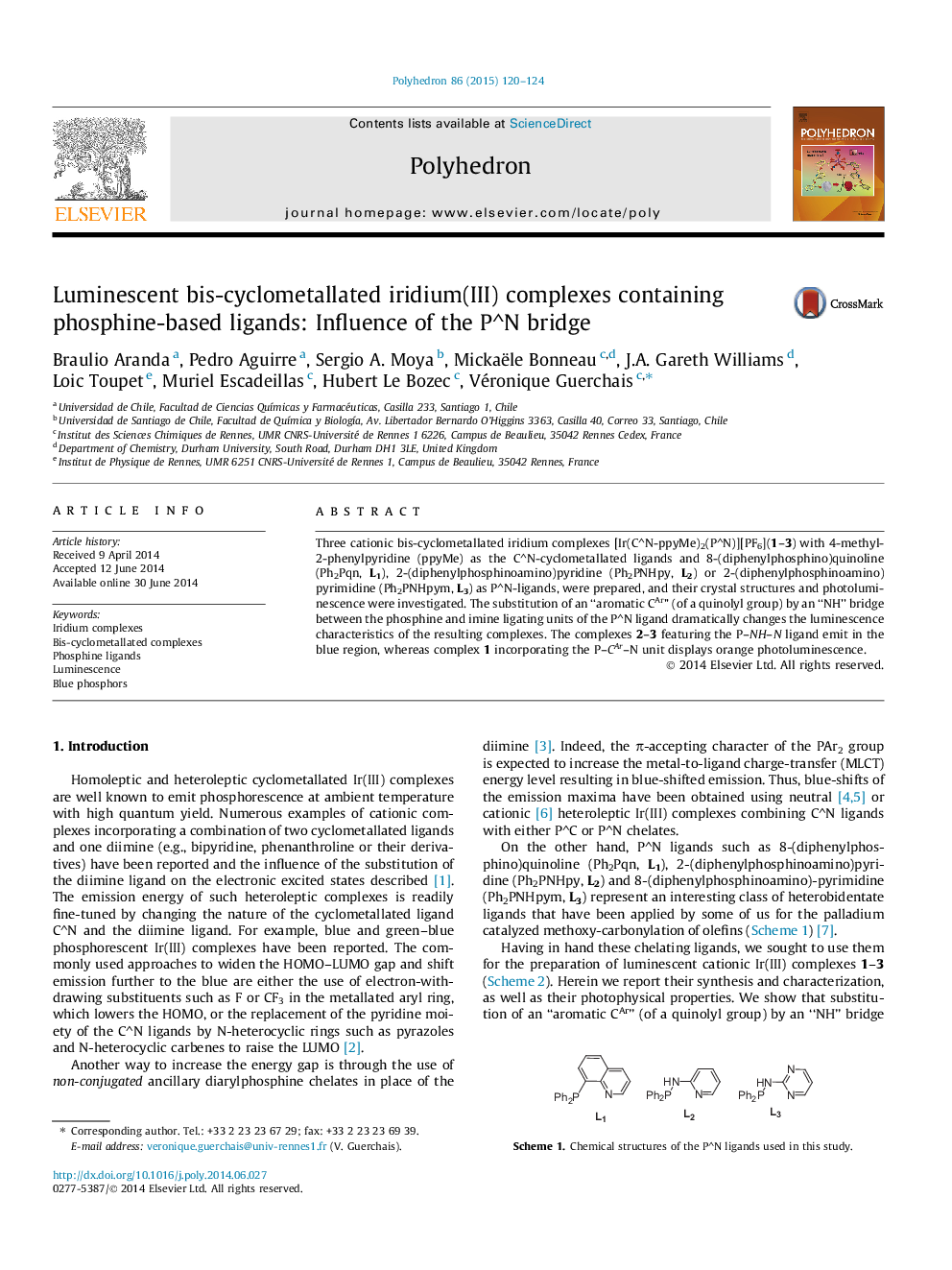| Article ID | Journal | Published Year | Pages | File Type |
|---|---|---|---|---|
| 1337512 | Polyhedron | 2015 | 5 Pages |
Three cationic bis-cyclometallated iridium complexes [Ir(C^N-ppyMe)2(P^N)][PF6](1–3) with 4-methyl-2-phenylpyridine (ppyMe) as the C^N-cyclometallated ligands and 8-(diphenylphosphino)quinoline (Ph2Pqn, L1), 2-(diphenylphosphinoamino)pyridine (Ph2PNHpy, L2) or 2-(diphenylphosphinoamino) pyrimidine (Ph2PNHpym, L3) as P^N-ligands, were prepared, and their crystal structures and photoluminescence were investigated. The substitution of an “aromatic CAr” (of a quinolyl group) by an “NH” bridge between the phosphine and imine ligating units of the P^N ligand dramatically changes the luminescence characteristics of the resulting complexes. The complexes 2–3 featuring the P–NH–N ligand emit in the blue region, whereas complex 1 incorporating the P–CAr–N unit displays orange photoluminescence.
Graphical abstractThree cationic bis-cyclometallated iridium complexes with 4-methyl-2-phenylpyridine (ppyMe) as the C^N-cyclometallated ligands and the P^N-ligands, 8-(diphenylphosphino)quinoline (Ph2Pqn, L1), 2-(diphenylphosphinoamino)pyridine (Ph2PNHpy, L2) and 2-(diphenylphosphinoamino)pyrimidine (Ph2PNHpym, L3), were prepared, and their X-ray crystallography, and photoluminescence were investigated. The complexes 2–3 featuring the P–NH–N ligands emit in the blue region, whereas the P–CAr–N-incorporating complex 1 displays orange photoluminescence.Figure optionsDownload full-size imageDownload as PowerPoint slide
